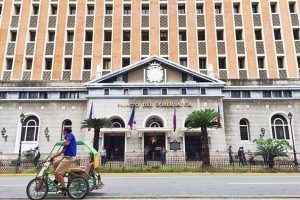BSP to tweak rules on large exposures

THE PHILIPPINE central bank is proposing to amend the guidelines on large exposures for big banks and their subsidiaries, in an effort to improve credit concentration risk management.
The Bangko Sentral ng Pilipinas’ (BSP) proposed circular also outlines the regulatory reporting requirements for banks under the large exposures framework to ensure that risks will be properly monitored.
“BSP-supervised financial institutions (BSFIs) are expected to properly and accurately identify, measure, monitor, and control large exposures across books and operations in order to protect BSFIs’ solvency from maximum losses resulting in sudden counterparty failure,” the draft circular posted on the BSP website stated.
Under the proposed rules, an exposure is considered a large exposure if it is equal to or higher than 10% of a bank’s eligible capital.
“Large exposures shall refer to exposures to a counterparty or a group of connected counterparties equal to or greater than 10% of covered banks/quasi banks’ Tier 1 capital,” the rules read.
This is a change from the previous definition of large exposure which was 5% of a lender’s qualifying capital.
Tier 1 capital is defined as the core capital of a lender, which includes its disclosed reserves and equity capital. Meanwhile, the qualifying capital is part of Tier 2 which is a supplementary capital for banks.
The framework will be applicable for universal and commercial banks as well as their subsidiary lenders and quasi-banks.
The large exposure framework for universal banks and their subsidiaries will be implemented by Jan. 1, 2024, based on the transitory provision of the circular.
Stakeholders are given until April 29 to submit feedback on the draft regulation to the BSP.
The circular also set the criteria in assessing the economic interdependence of counterparties that have borrowings with banks to ascertain large exposure.
The BSP said banks should monitor whether 50% or more of a counterparty’s annual gross receipt or gross expenditure came from transactions with the other party.
Lenders should also look into whether the financial difficulties, insolvency, or default of one counterparty could in turn spill over to other counterparties in terms of repayments of liabilities.
The central bank said lenders should also assess the funding source of counterparties and if there are no alternative provider of funds that could support the counterparties in case of a default from the major funding source.
“In cases where the criteria do not automatically imply an economic dependence that results in two or more counterparties being connected, covered banks shall provide evidence to the BSP that a counterparty which is economically dependent to another, can still pay its liabilities within a reasonable period of time even if the latter’s financial condition weakens,” the BSP said.
Banks are expected to ensure they have the monitoring and reporting requirements related to their large exposures at any given time it will be verified by the BSP. These large exposures will be reported on a semi-annual basis or every June 30 or Dec. 31 of each year.
The BSP has stressed the banking system remained stable and well-capitalized despite the deterioration in banks’ asset quality amid the pandemic. It attributed this to the regulatory reforms that were implemented following the Asian Financial Crisis and the Global Financial Crisis. — Luz Wendy T. Noble




